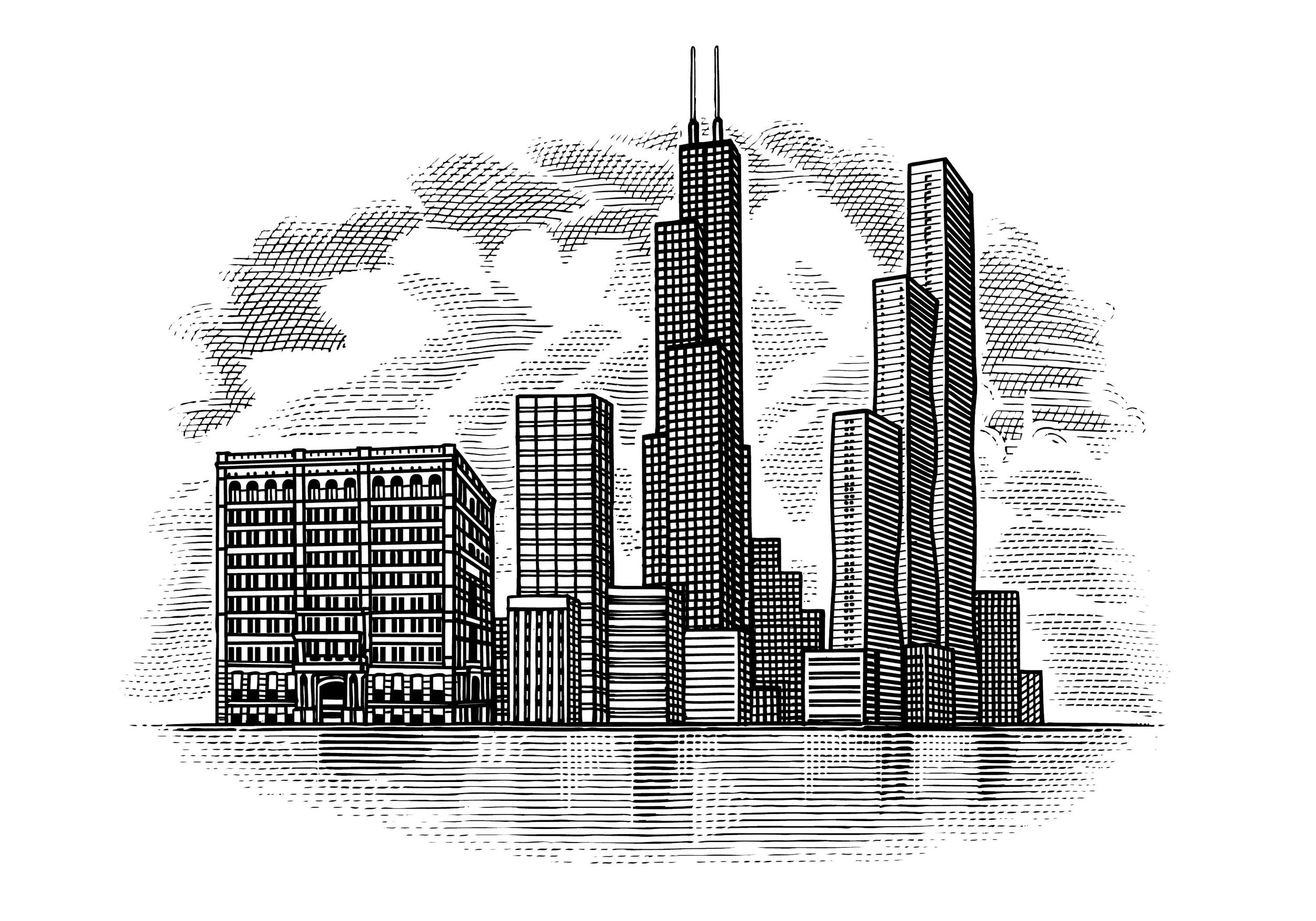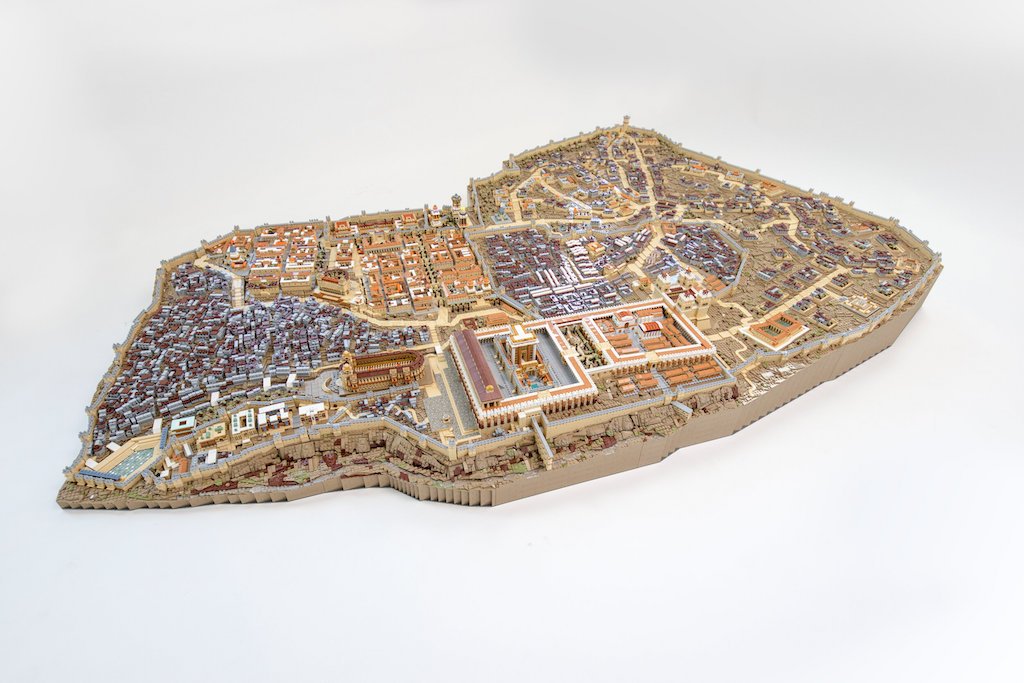"I built with Lego at an early point in my life and never put it down:" An Interview with Lego artist Rocco Buttliere
Estimated reading time: 6.5 minutes (1267 words)
Legos mean a lot of things to a lot of people. For some, they were a fun childhood hobby that was shared with family or friends. Others never stopped building and kept up with every release. Almost everyone has a favorite Lego set or a memory that centers around building something unique.
The imagination inspired by Legos has led Chicago architect and visual artist Rocco Buttliere to create some incredible scenes. Using Legos as his medium, Rocco designs and builds scale models that are true to life. Below, he speaks about his background, his process, and his current project: to reconstruct the ancient city of Rome.
Tell me a little about yourself and about your background. Are you from Chicago originally?
I was born and raised in Buffalo Grove and I've lived in Chicago for the past 10 years. I got a degree in architecture at IIT on the south side and I live in Albany Park.
I built with Lego at an early point in my life, and then just never put it down. What was interesting to me was capturing different landmarks around the world. Years went by, and eventually I had the makings of a body of work. I started doing exhibitions around the country with a traveling Lego show and building my own one man small business out of commissions and exhibitions.
As far as the work goes, it started off as individual landmarks, but lately, it's been larger and larger landscapes. I’m trying to tackle larger, geographically accurate areas using the same plastic bricks we all recognize, which is why I think Lego is one of the most successful mediums in terms of contemporary art.
How would you describe what you do?
A lot of people are familiar with the Lego kits, but those are designed by professionals who work for the LEGO Group in Denmark. I'm completely starting out freelance, but then I eventually started a business just based on commissions, where people will contact me and they're interested in paying me for either a replica of something I've already done, or something completely new that they're looking for, for an office or their house or whatever. The other half of the business model is just exhibitions and traveling around to at least a dozen shows each year with a family owned company that runs a bunch of Lego exhibitions.
How long have you been a Lego visual artist?
The first model I did was the Sears Tower back in 2009. That was when I was in high school, and I built it out of a growing interest in architecture from years of visiting the city. The Sears Tower is just a very boxy Lego friendly shape and that essentially set the scale of roughly 1:650 that I would use for the rest of my work going forward.
I had obviously planned to get a degree in architecture and then probably end up practicing architecture. But about halfway through college I was just in the right place at the right time to get noticed. Other people usually just build something and then take it apart and reuse the bricks for whatever the next thing is going to be. But because everything I did was the same scale, it just made sense to keep it all intact. And the inadvertent consequence of that was that it lends itself well to an exhibition gallery, which again, was never the intent, but it has nevertheless paved the road for the kind of goals of where I'm hoping to take this in the future.
When you settle on a design, what's your process? How do you go about designing something, procuring the bricks, and then building it?
I design all of my work digitally, which I guess is kind of an outlier in terms of people who do this line of work professionally. But because everything is roughly the same scale, and because all the parts are so highly specific, I need to know exactly what's going into it and which colors and quantities of every single part to order. And that adds a layer of complexity to it. But also designing it digitally takes a lot of the guesswork out of the equation. And that same time, though, it takes several months to design a large project digitally.
In terms of obtaining the parts, I pull from my own inventory, which I actually keep surprisingly low just because each project I do is usually pretty vastly different. So that just leads to tons of different parts usage. I also use BrickLink, which is an aftermarket for new and used Lego bricks, and that's where I order the individual parts.
Left to right: Forbidden City, Beijing. First century Jerusalem.
What has been the most challenging project that you've worked on?
Different pieces tend to be challenging for different reasons. One project I did was first century Jerusalem. This project was to represent the city in roughly 70 BCE, right before the Romans just completely destroyed it. So in terms of what we know was there, there's very little to go off of, which makes it more of an intuitive process. You're very much trying to be as faithful as you can to the areas that we know quite a bit about, like the Temple Mount, but in terms of other landmarks, it's more open to interpretation.
Right now you are working on building a model of the entire cityscape of Ancient Rome. Give me a little bit of background on that project. What was the inspiration for it? How exactly are you doing it?
The first time I came around to the idea of Rome was for a 2019 commission for a client in Brazil. That was the first large scale diorama we had worked on together. It captured an area incorporating the Capitoline and Palatine hills, the Circus Maximus, Colosseum, and the Tiber River. It had a critical mass of good density and a fair amount of variety, as well as different architectural typologies and hillsides.
In all the research I've done since then, and subsequent projects, Rome was the rabbit hole I kept coming back to. In 2021 I really wanted to get back to Rome with the idea that I would potentially redesign the landscape I had done in 2019. I wanted to take as much time as I needed to really get into the weeds and try to get as much detail as possible. For the sake of comparison, the original commission was around 66,000 bricks, and this new one is about 104,000, even though it covers this exact same area. It just goes to show the amount of detail you can really capture when you spend about eight months designing as opposed to just a month and a half.
It is all roughly the same scale of 1:650. And it is as close as I can get to geographically accurate but it's not a perfect model. It's not a perfect model but I also think that's the cool part because it leads to interesting parts usage. You never quite know what you're going to use, whether it's telescopes for marble columns, or candlesticks for columns and other areas. When you're working at one scale, after a while through trial and error, you're bound to find different usages that are non traditional.
But at the end of the day, they're all the same bricks everyone has grown up using, which I think is pretty cool. The longer you stare at it, it might be overwhelming at first, but the more you'll recognize areas and because of the parts you have grown up using you can find a connection with it.
Left to right: SPQR Phase I, Domus Augustiana, Circus Maximus, Forum Romanum








